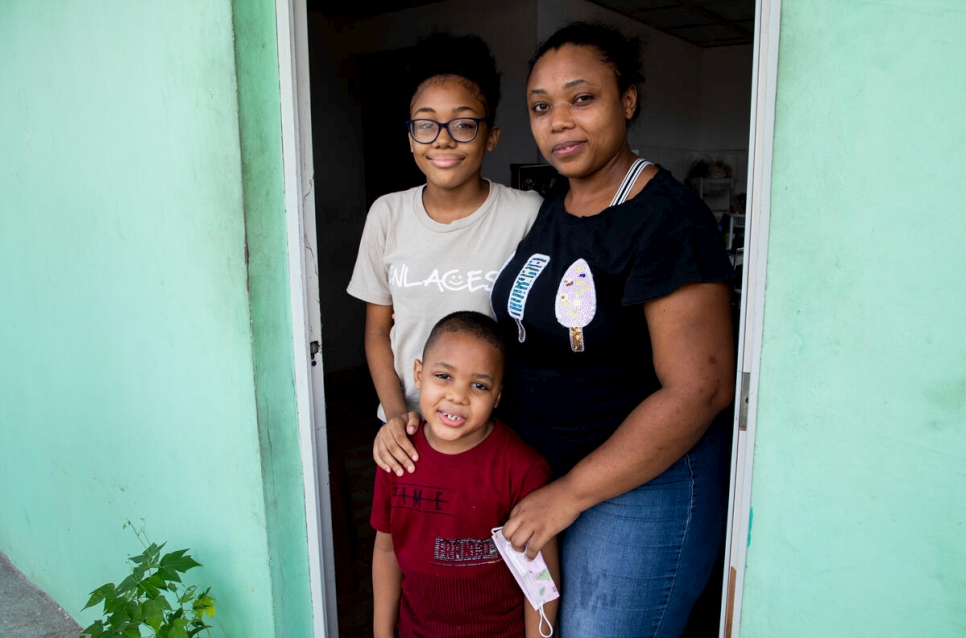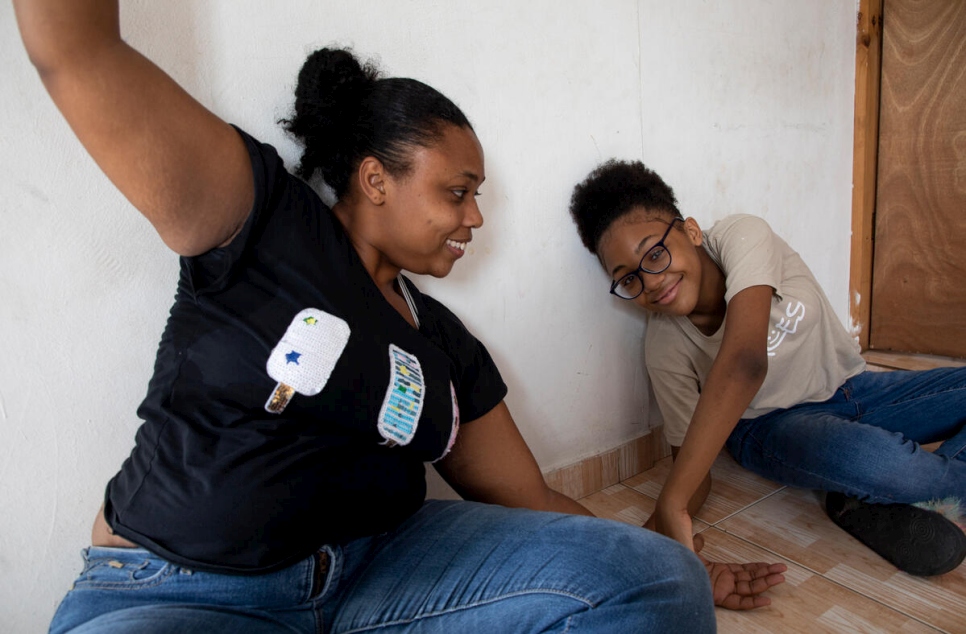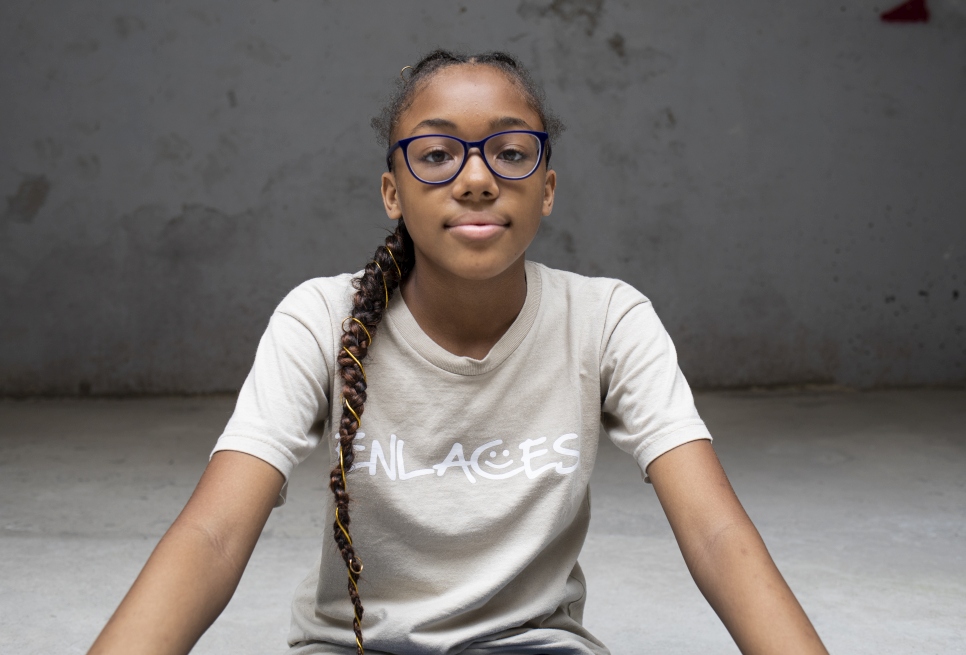Dance programme helps Venezuelan teen settle into new life in Panama
Programa Enlaces uses art and dance to build bridges between communities, helping young refugees adjust to life in their new host country.
Dayana García, 14, practises for the dance she will perform with a group made up of young refugees and Panamanians.
© UNHCR/Diana Diaz
When 14-year-old Dayana García still lived in Venezuela, she and her friends would turn their afterschool homework sessions into impromptu dance parties, their fancy footwork breaking up the monotony of the reading, writing and maths exercises.
But when insecurity and widespread food and medicine shortages forced Dayana’s family to flee Venezuela in 2018, she thought dance was a thing of the past. The family headed northwest, taking the dangerous journey overland from their home in the capital, Caracas, through the Darien Gap – the dense jungle that separates Colombia from Panama.
The journey proved traumatic. Dayana’s family, and the group of around 10 other people with whom they attempted the crossing, were robbed after entering the jungle and spent seven days wandering the 5,000km² wilderness, without food, water or other basics.
“I thought I was going to die,” recalled Dayana with a shudder. “I didn’t know what to do.”
They managed to make it out alive, and Dayana, her mother, father and brother, Giovanni, applied for asylum in Panama. But despite her relief at having survived the terrible ordeal in the jungle, Dayana still struggled to adapt to life in her new host country.
"I didn't fit in at first."
She and Giovanni enrolled in their local public school in the Panama City suburb of Pedregal, but Dayana – an outgoing and popular student back in Venezuela – had a hard time making new friends.
“I didn’t fit in at first,” she recalled.
An afterschool programme called Programa Enlaces, which is Spanish for “links,” changed all that. The programme, which receives financial support from UNHCR, the UN Refugee Agency, aims to transform the lives of Panamanian and refugee youths through music and dance.
Dayana joined the group during the coronavirus pandemic, and a friend she made via the remote sessions, a Panamanian girl named Ana, helped her through the long, difficult months of lockdown.
“The Enlaces Programme is the best thing that’s happened to us,” said Dayana’s mother, Katiana. “It’s a light amid the darkness that one is plunged into as a refugee.”
In addition to helping her make new friends, the programme, which has served more than 300 young people since receiving support from UNHCR in 2018, also rekindled Dayana’s passion for dance. As Panama’s mobility restrictions eased in January, Enlaces was able to organize more in-person activities, including the contemporary dance programme in which Dayana has taken a leading role.
During a visit to Panama this week, UN High Commissioner for Refugees Filippo Grandi attended a performance by the contemporary dance group.
“Art and culture can be the catalyst for integration between host communities and refugees,” said the High Commissioner during the event. “It can help them shine and thrive together.”
The performance, filled with moments of tension and relief, portrayed Dayana’s experience of crossing the Darien Gap.
“We can see the transformative role dance can have in the lives of Panamanian and refugee youth; they have come together in the spirit of friendship and empathy,” said Grandi.
The piece also reflected on the risks and ordeals displaced people around the world face when fleeing their homes and highlighted the courage and resilience required to rebuild their lives from scratch.
While Dayana still faces hurdles to fully integrating into Panamanian society, sharing time with her contemporaries through dance has helped her feel more at ease and she is now planning her future in Panama. She still has four years of secondary school ahead of her, but she is already thinking about which university she would like to attend to realize her dream of becoming a lawyer.
“I would like to stay in Panama,” she said, adding, “I feel that my life is here.”



